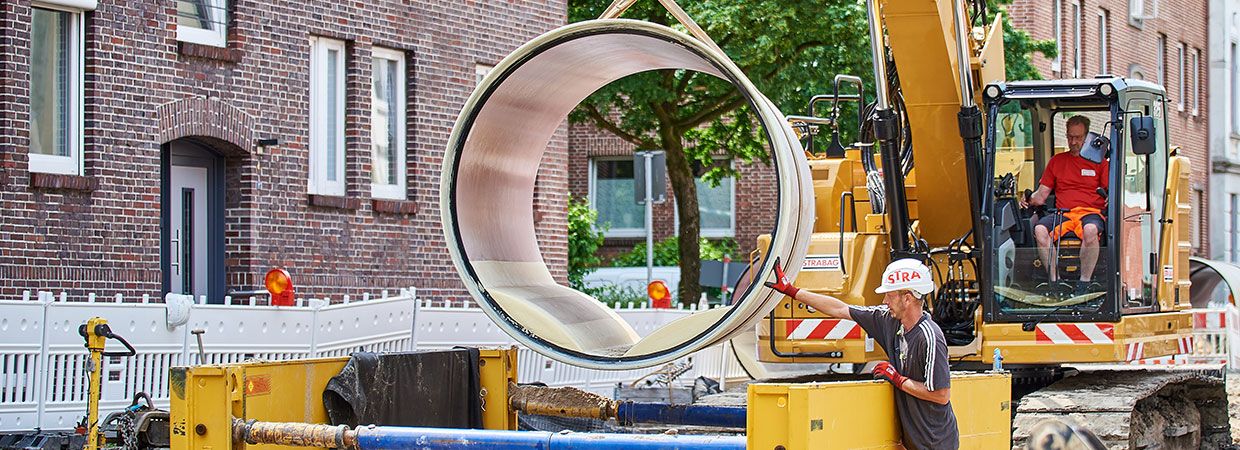english – Sustainable sewer rehabilitation - working group gets input from Finland
Sustainable tendering for sewer rehabilitation - there is still a lot to be done in the search for a uniform solution. This was also confirmed by an expert from Finland, who was invited by the RSV working group to report on the calculation of emissions in trenchless construction methods.
Unlike life cycle analyses for products, which begin with raw material production and end at the factory gate, Heikki Aakko looked at emissions during installation on site as part of a master's thesis."Overly generalized statements about sustainable products and procedures should be treated with caution if the project-specific boundary conditions are not considered. Each construction measure must be considered individually and suitable calculation methods are needed to determine the emissions," emphasizes Heikki Aakko.
His comparison of calculated emissions with trenchless and open construction in the construction phase showed - as expected - advantages for trenchless construction. Using HDD construction as an example, he determined only about half the emissions compared to open construction, when using typical pipe diameters. With smaller pipe dimensions of polyethylene pipe, the emissions caused by transporting the pipes only played a subordinate role with HDD.
The most important parameters: Transport routes, pipe dimensions, general conditions
According to Aakko, how sustainable a procedure is depends on many parameters. "The transportation distances are an important factor. It makes a difference whether you transport the cured-in-place pipes from Finland or Denmark. Whether 200 kilometers or 20 - emissions can be significantly reduced with shorter transport routes." In addition, the liner diameter is decisive for cured-in-place pipes, as more energy is required for curing with large dimensions and more energy is consumed when producing the large diameter cured-in-place pipes.
An important criterion for deciding on the sewer rehabilitation method is also the other framework conditions of the construction measure. If earthworks are planned for the road above the sewer anyway, the cost of open construction is significantly reduced compared to trenchless sewer renovation. "In addition, sound knowledge of the methods and good planning are important."
Still many questions to be clarified
According to Heikki Aakko, there are still many questions to be answered in the future, for example: How will sustainability be independently monitored in the future? How will the sewer renovation of manholes be included in the assessment? He also emphasized the importance of concrete practical examples that demonstrate actual sustainability in implementation.
"Our Scandinavian colleagues are already a step ahead with emission calculations and are doing a good job," said Roland Fischer, acknowledging Aakko's installation. Roland Fischer heads the working group together with Michelle Peeck.
Heikki Aakko works at the Finnish engineering office GIDON Infra Oy, which specializes in trenchless construction methods for the construction and renovation of networks for water and wastewater, telecommunications and electricity.
The RSV's sustainability working group is working intensively on the topic and is planning to publish an RSV information sheet on sustainability in sewer rehabilitation. The working group is also working on further proposals for reducing CO2 emissions in sewer rehabilitation - in particular for a practicable and beneficial integration into tenders and award procedures.
Image: Amiblu
